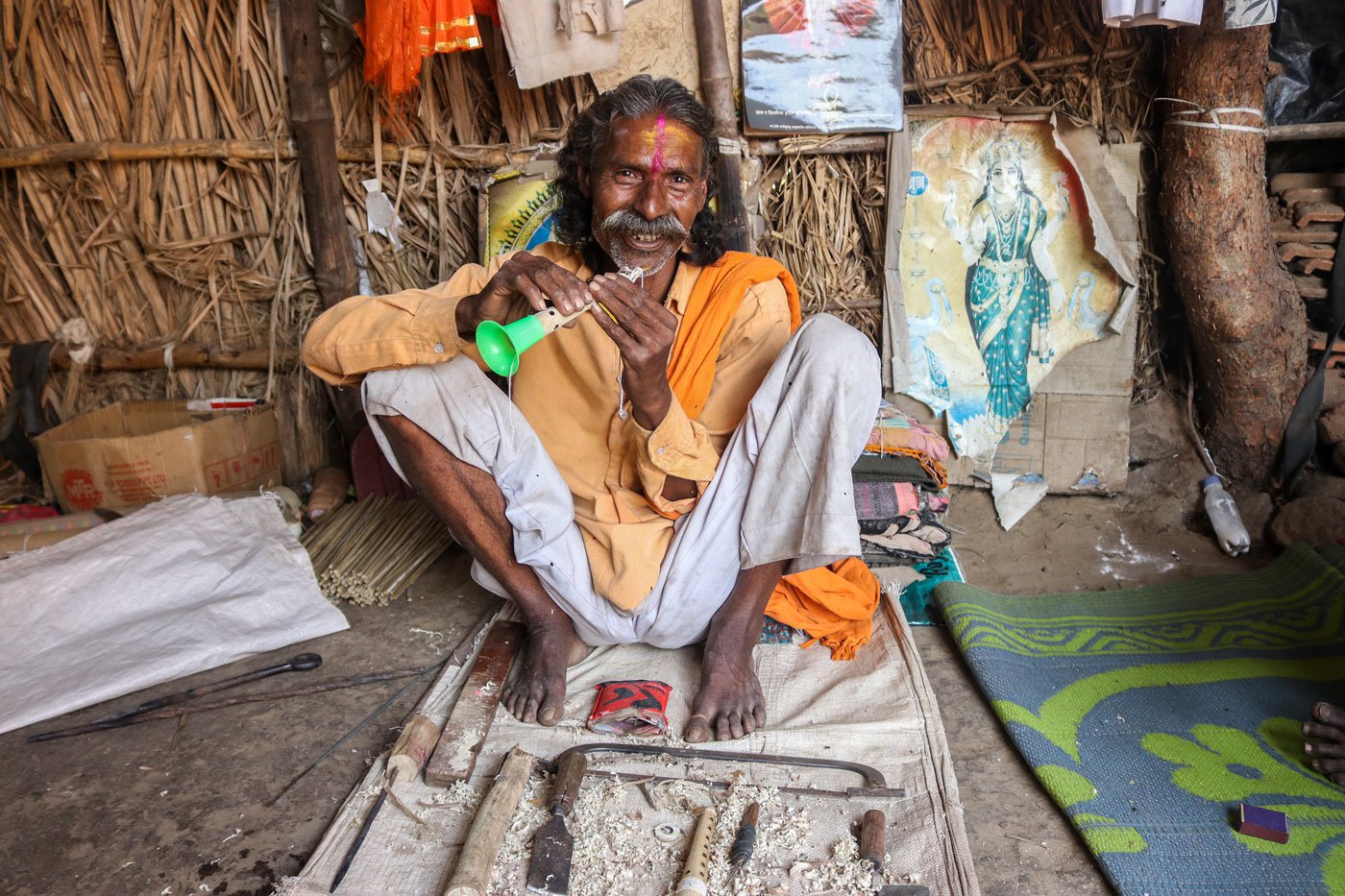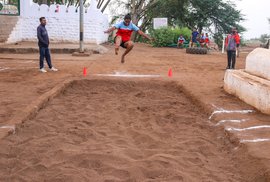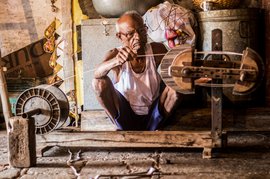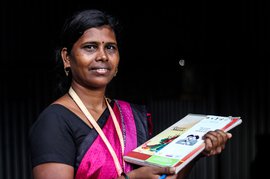It’s tempting to call it an example of frugal innovation. But 65-year-old Narayan Desai simply describes it as the 'death’ of his art. ‘It’ being a tweak in the design and components of his shehnais, which he was forced to do in response to market realities, and a definite threat to the very existence of his art.
The
shehnai
is a wind instrument, popular at weddings, festivals and local events.
Until two years ago, every
shehnai
that Desai crafted had a
pitali
(brass) bell attached to its farther end. In traditional, handmade
shehnais,
this flared bell, or
vati
as it is called in Marathi, is what enhances the quality of the notes emanating from the wooden body of the musical instrument. At the peak of his career, in the 1970s, Narayan would maintain a stock of over a dozen brass bells, procured from Chikodi town in Karnataka’s Belagavi district.
However, in recent years, two factors have forced him to alter his technique honed over half a century: the rising prices of brass bells and a growing reluctance on the part of customers to pay what it takes to make a good
shehnai
.
“People have started asking me to sell a
shehnai
for Rs. 300-400,” he says. A difficult demand to meet, given the brass bell alone now costs around Rs. 500, he points out. After losing several potential orders, Narayan finally hit upon a solution. “I bought plastic trumpets at the village fair, cut off their farther ends [which resemble flared bells] and fitted these [bell-shaped plastic parts] into the
shehnais
in place of the brass bells.
“It does affect the sound, but that [quality] is what people demand now,” he laments. To the more discerning buyer, he continues to offer the option of providing their own
vati
. The plastic alternative costs him merely Rs. 10, not counting the burden on his conscience for having compromised his art.
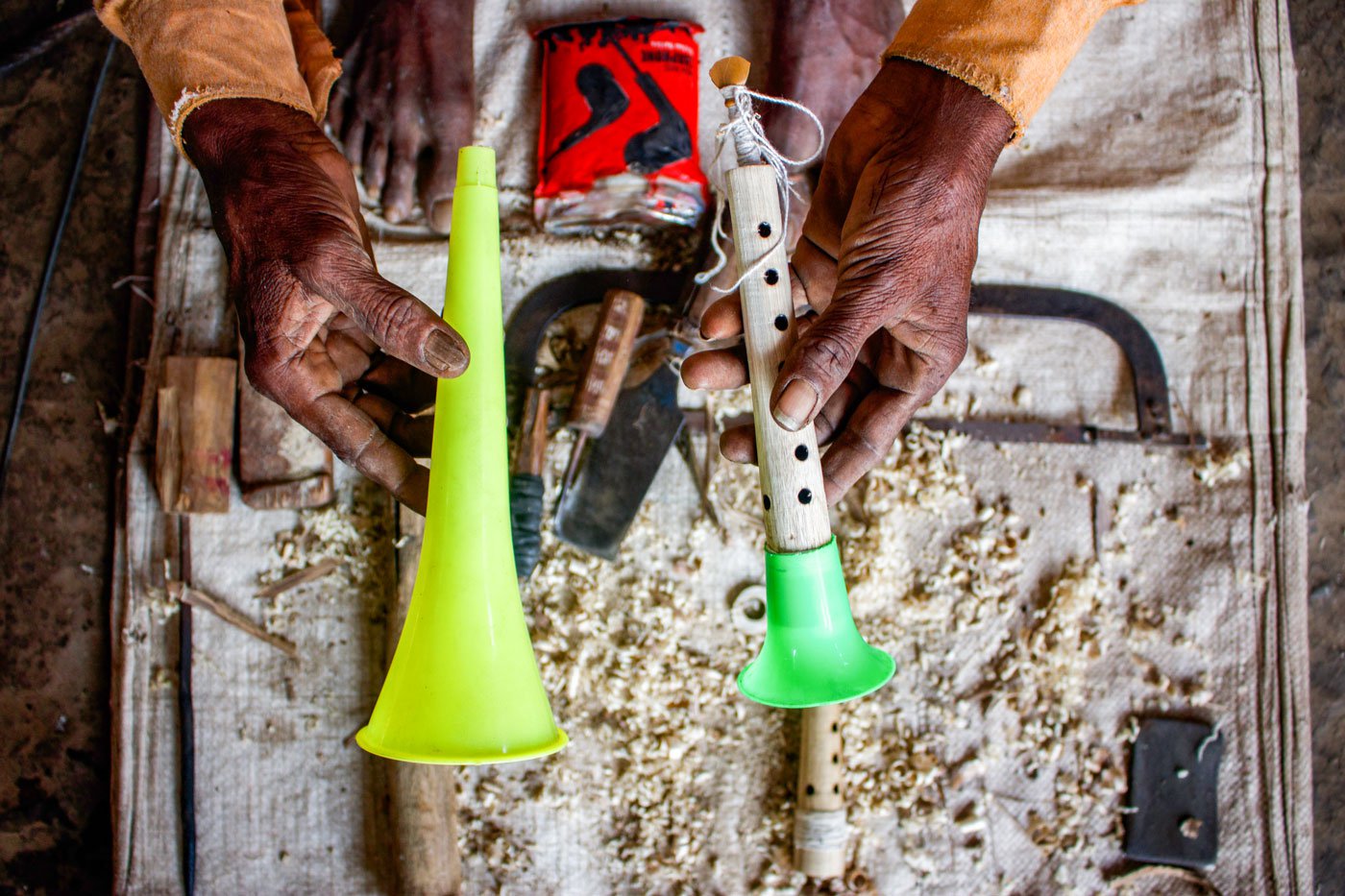
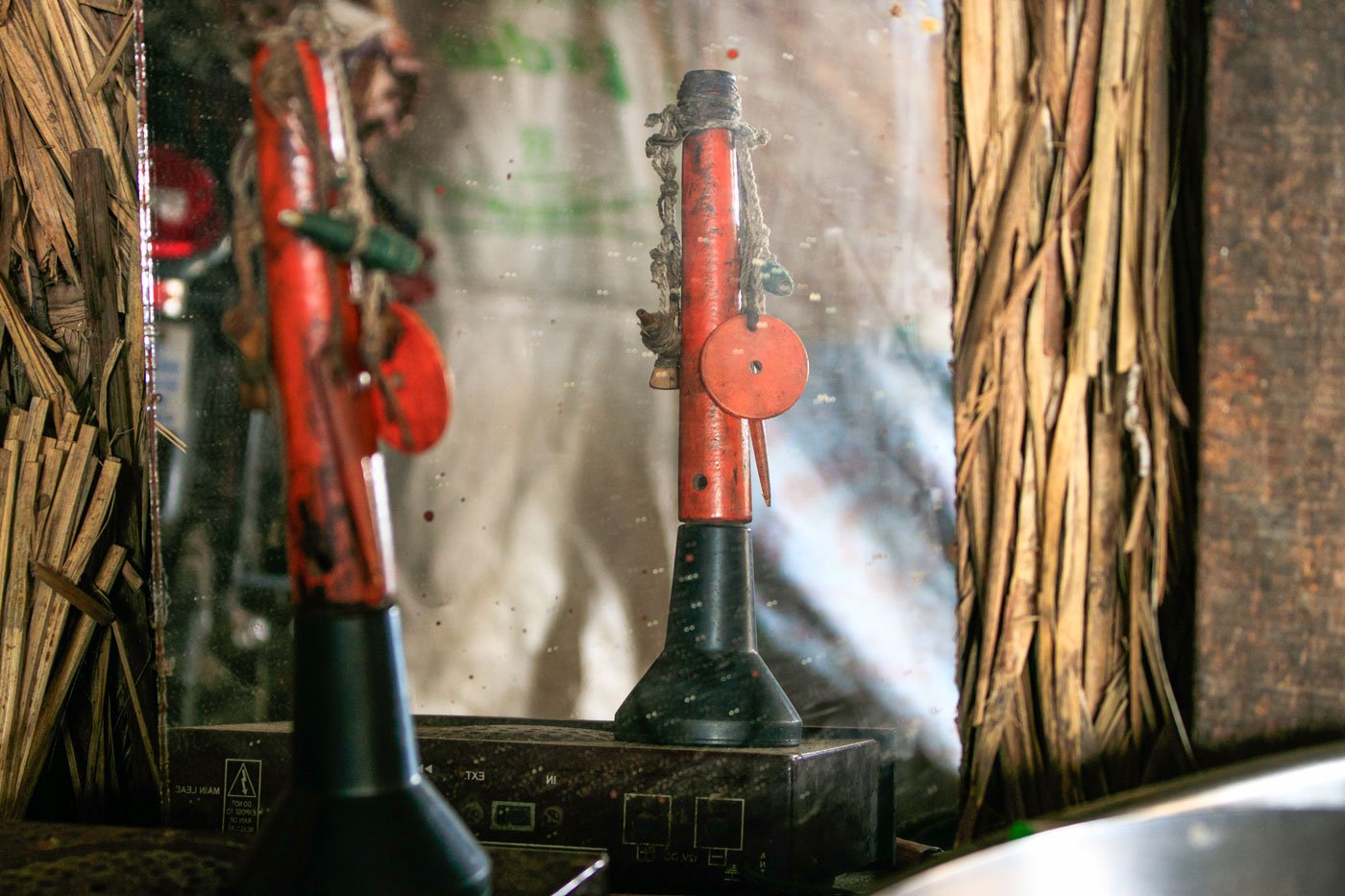
Narayan shows the plastic trumpet (left), which he now uses as a replacement for the brass bell (right) fitted at the farther end of the shehnai
Yet, he acknowledges that had he not found this solution, the art of shehnai -making would have died in Manakapur, a village in northern Karnataka, along the Maharashtra border, with a population of 8346 (Census 2011).
For as far back as he can remember the
shehnai
has been played at auspicious occasions, such as weddings and wrestling matches, in the villages of Belagavi and in nearby Maharashtra. “Even today, we are invited to [perform at]
kushti
[clay wrestling] matches,” he says proudly. “This tradition hasn’t changed. A bout will not start if there is no
shehnai
player.”
In the late ’60s and early ’70s, his father, Tukaram, would receive orders for more than 15
shehnais
every month, from buyers in far-flung places; 50 years on, Narayan receives barely two orders in a month. “Cheaper alternatives are now available in the market for half the price,” he says.
The waning interest in the
shehnai
among the younger generation – he blames it on the trend of orchestras, musical bands, and electronic music – is also affecting demand. Among his own extended family and relatives, only his 27-year-old nephew, Arjun Javir, plays the
shehnai
in Manakapur. And Narayan is the only craftsman in Manakapur who can make both the
shehnai
and the
basuri
(flute) by hand.
*****
Narayan never attended school. His training in shehnai- making began whilst accompanying his father and grandfather, Dattuba, to village fairs. Back then, Dattuba was among the finest shehnai players in Belagavi district. “They played the shehnai, and I danced,” he says of his initiation into the family trade when he was around 12 years old. “As a child, you feel like touching a musical instrument to find out how it works. I had the same curiosity,” he says. He also taught himself to play the shehnai and the flute. “If you don’t know how to play these instruments, how will you make them?” he challenges with a smile.
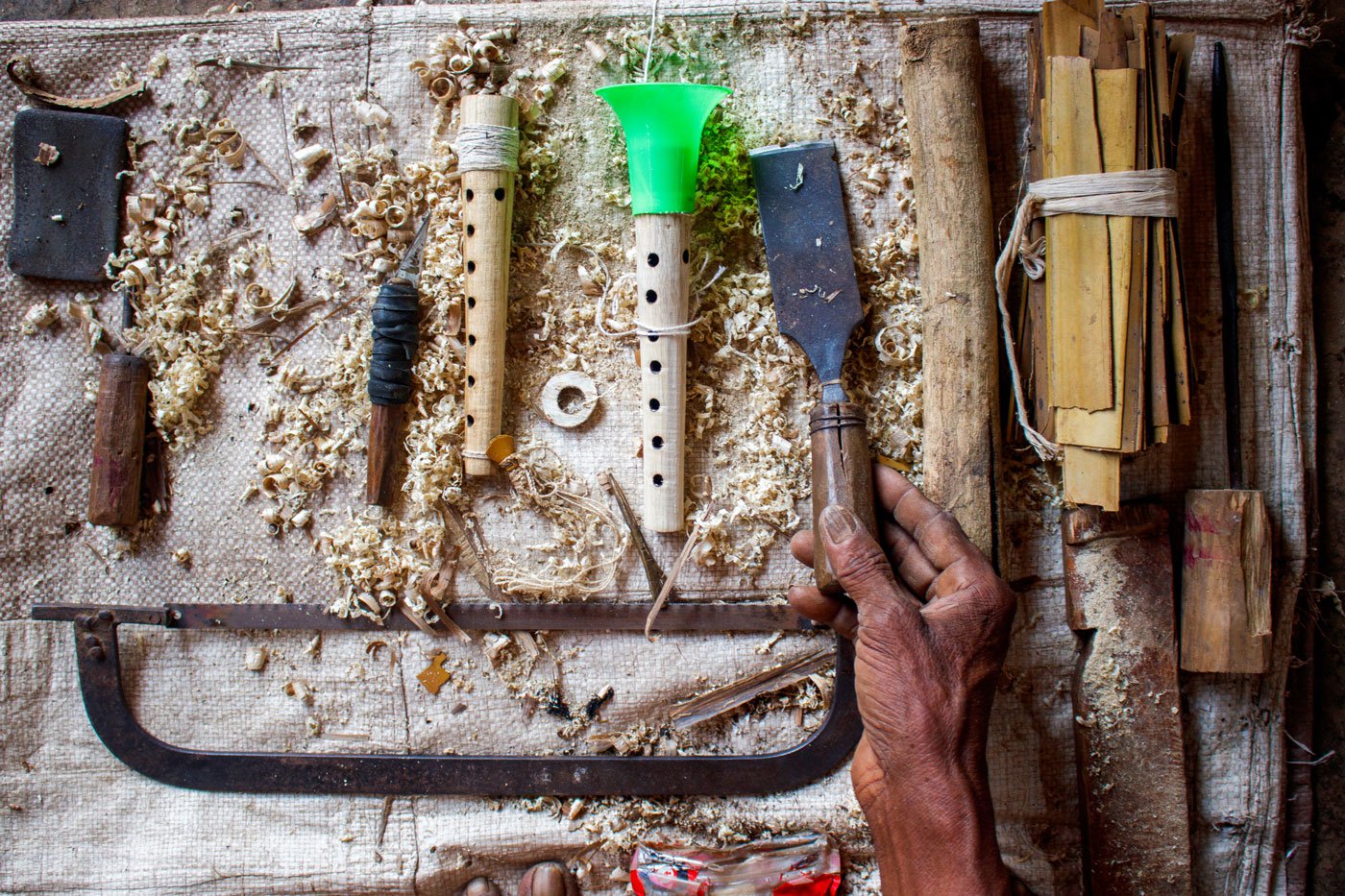
Some of the tools that Narayan uses to make a shehnai
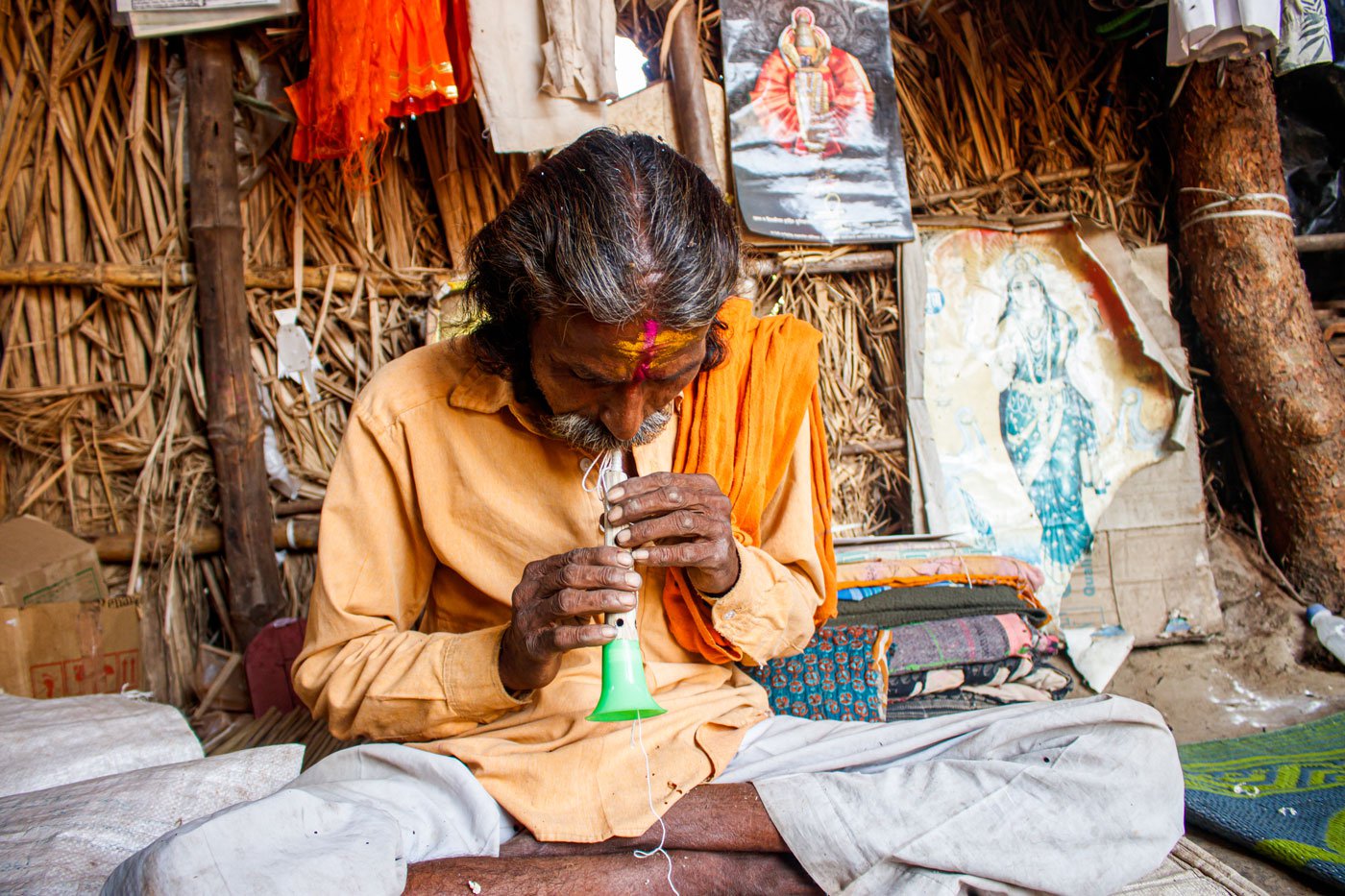
Narayan inspecting whether the jibhali ( reed) he crafted produces the right tones
When Narayan was around 18, his father passed away, leaving his craft and legacy in his son’s hands. Later, Narayan sharpened his skills under the expert guidance of his father-in-law, the late Ananda Kengar, another expert shehnai and flute maker in Manakapur.
Narayan’s family belongs to the Holar community. Listed as a Scheduled Caste, Holars have traditionally been renowned
shehnai
and
dafda
(tambourine) artistes; a few of them like the Desai family also make musical instruments. The craft, however, has been a male preserve. “From the start, only men have made
shehnais
in our village,” says Narayan. His mother, the late Tarabai, was an agricultural labourer who would single-handedly look after the entire household during the six months of the year that the men travelled to play the
shehnai
at weddings and wrestling matches.
In his heydays, Narayan remembers, he would cycle to nearly 50 different village
jatras
every year. “I would go down south to Goa and the villages of Belagavi [in Karnataka] and Sangli and Kolhapur [in Maharashtra],” he says.
Despite falling demand for his
shehnais
, Narayan still spends long hours in the 8X8 feet workshop adjoining his one-room home, surrounded by the fragrance of
sagwan
[teak],
khair
[acacia catechu], cedar, and other types of wood. “I like sitting here because this reminds me of my childhood,” he says. Decades-old posters of Durga and Hanuman adorn the walls made of sugarcane and
shalu
(jowar) fodder. An
umber
(cluster fig) tree right at the centre of the workshop grows outward through the tin roof.
This is where, for the past five decades, he has handmade more than 5000
shehnais
, spending over 30,000 hours mastering the craft. Whereas it took him around six hours to craft a
shehnai
in the early days of his career, he can now accomplish the task in four hours. His mind and his hands carry the memory of every fine detail involved in the process. “I can make a
shehnai
in my sleep,” he says as he begins a live demonstration.
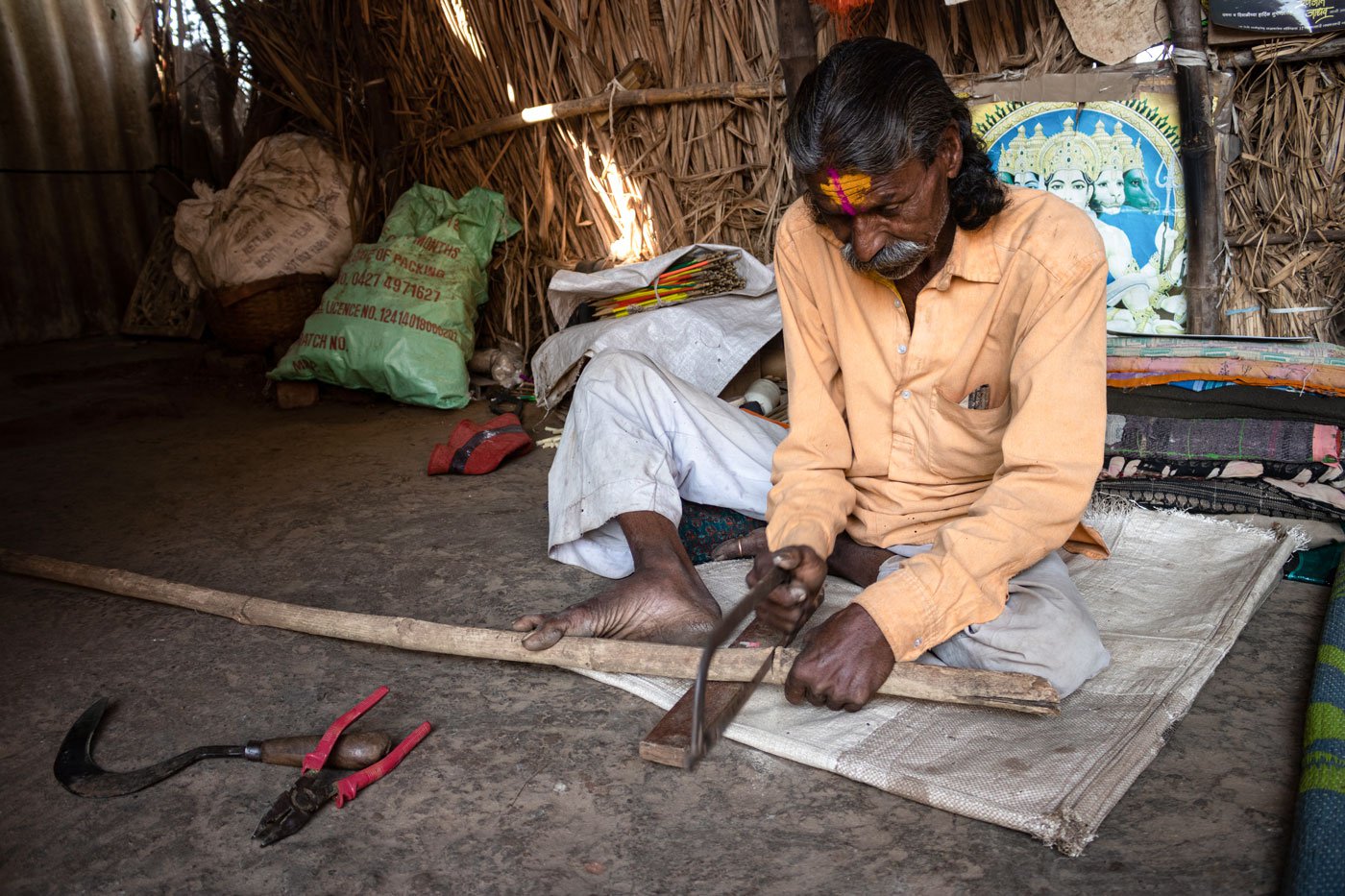
After collecting all the raw materials, the first step is to cut a sagwan (teak wood) log with an aari (saw)
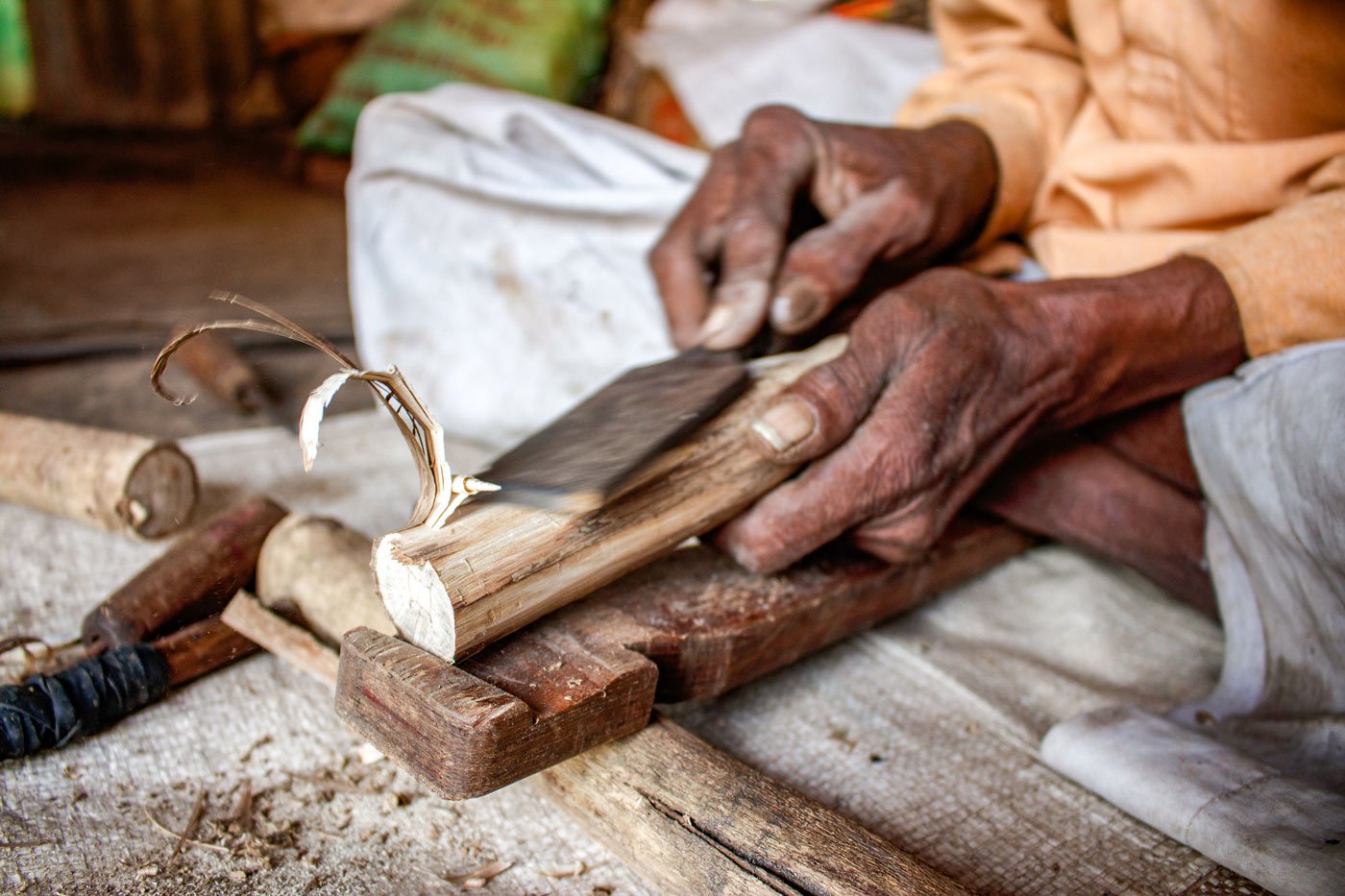
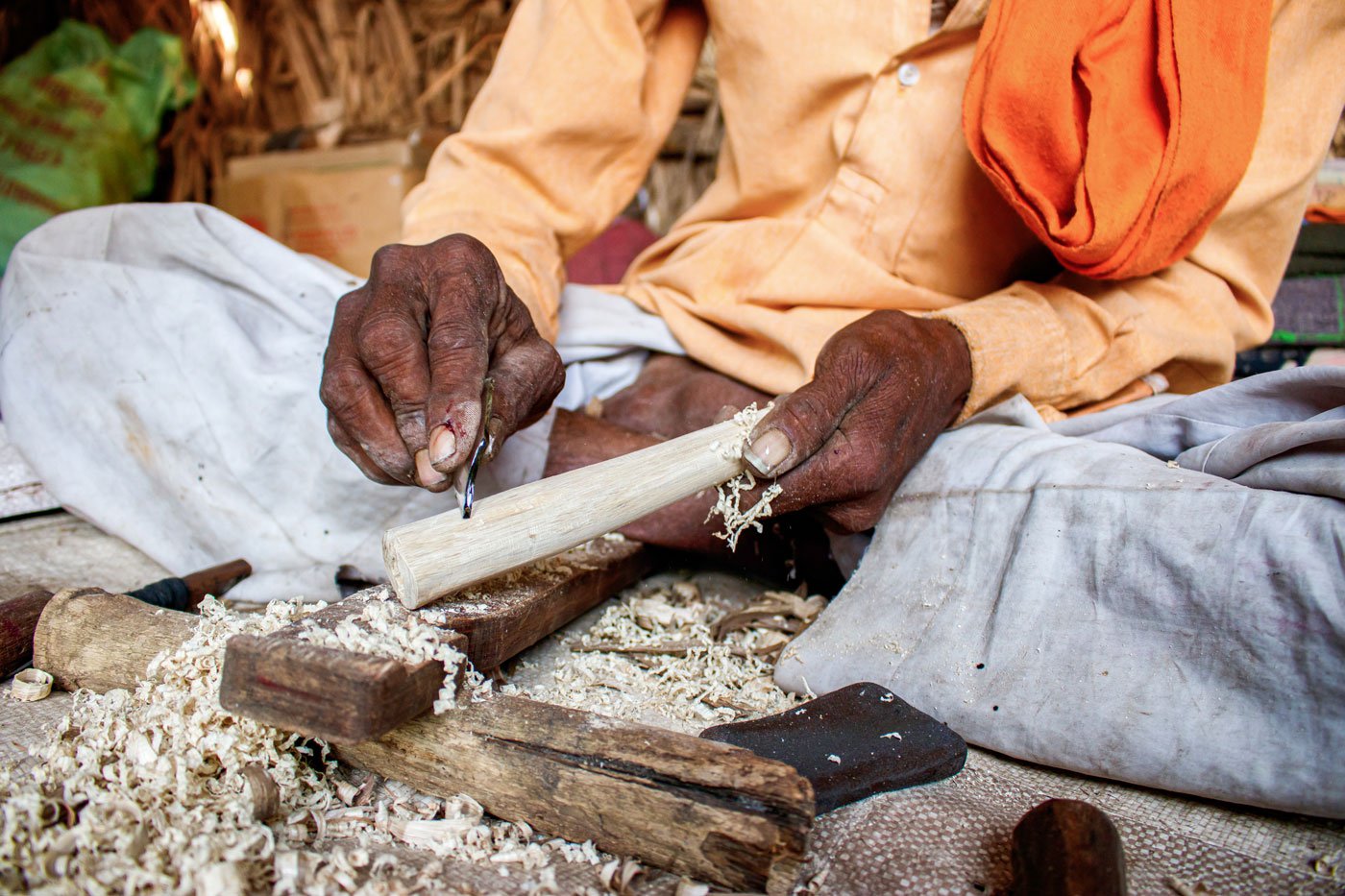
Left: After cutting a wood log, Narayan chisels the wooden surface and shapes it into a conical reed. Right: Narayan uses a shard of glass to chisel the wood to achieve the required smoothness
First, he cuts a log of sagwan (teak wood) with an aari (saw). Earlier, he would use fine- quality khair, chandan, and sheesham , which produced better notes. “Around three decades back, there were a lot more of these trees, in Manakapur and nearby villages. Now, they have become rare,” he says. A ghanfoot (cubic foot) of khair makes at least five shehnais . For 45 minutes, he chisels off the wooden surface using a randha (block plane). “If you make any mistake here, the notes don’t sound good,” he shares.
However, Narayan is not able to achieve the desired smoothness with the
randha
alone. He looks around the workshop and pulls out a white sack, from which he produces a glass bottle. He smashes the bottle on the floor, carefully picks a shard of glass and starts chiselling the wood again, laughing at his ‘
jugaad.’
The next step involves drilling holes on both ends of the chiselled conical reed using iron rods called
girmit
in Marathi. Narayan sharpens the rods on an
imri,
a smartphone-sized grinding stone
bought for Rs. 250 from Ichalkaranji in Maharashtra, 10 kilometres from his home. He points out that he makes all the metallic equipment on his own as buying everything is unviable. He swiftly drills the
girmit
through both ends of the reed. An error here can pierce his fingers, but he is not afraid. He peers through the hole for a few seconds. Satisfied with what he sees, he moves on to the most difficult part – marking the seven tone holes.
“Even a one-millimetre error produces a distorted pitch,” he says, adding, “there’s no way to correct it.” To avoid this, he marks the reference tone holes on a plastic pirn used in power looms. He then moves to his
chul
(traditional stove)
to heat three 17-centimetre-long iron rods. “I can’t afford a drilling machine. Hence, I use this traditional method.” Learning to work with the rods was not easy; he recalls sustaining many severe burns along the way. “We are used to burns and cuts,” he says as he swiftly alternates between heating the three rods and drilling the tone holes.
This process takes around 50 minutes, during which he inhales a lot of smoke that makes him cough frequently. But he doesn’t take a second’s break. “This has to be done rapidly; otherwise, the rods cool down, and reheating causes much more smoke.”
Once the tone holes are drilled, he washes the shehnai . “This wood is water resistant. Once I make a shehnai , it lasts at least twenty years,” he says proudly.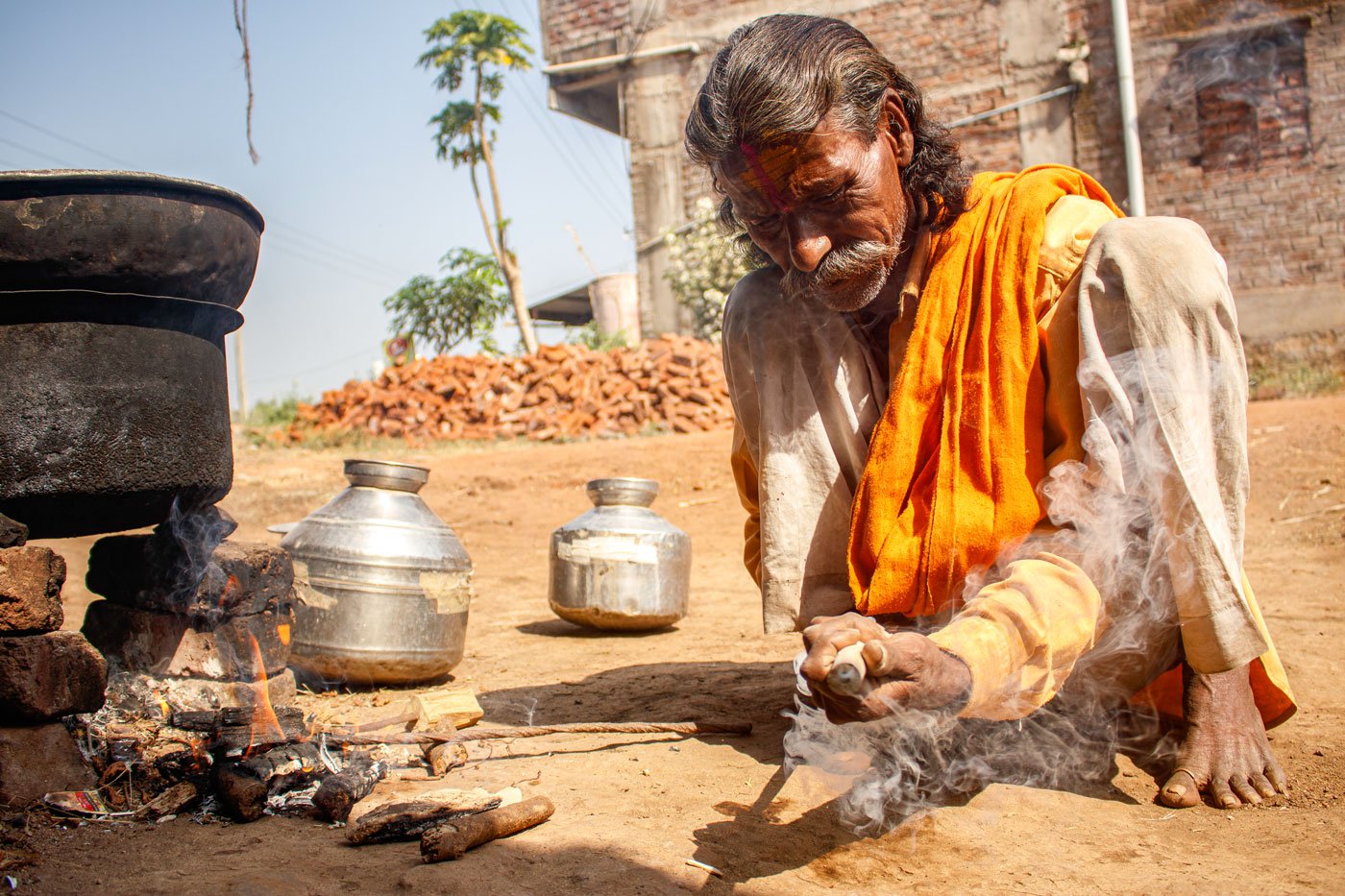
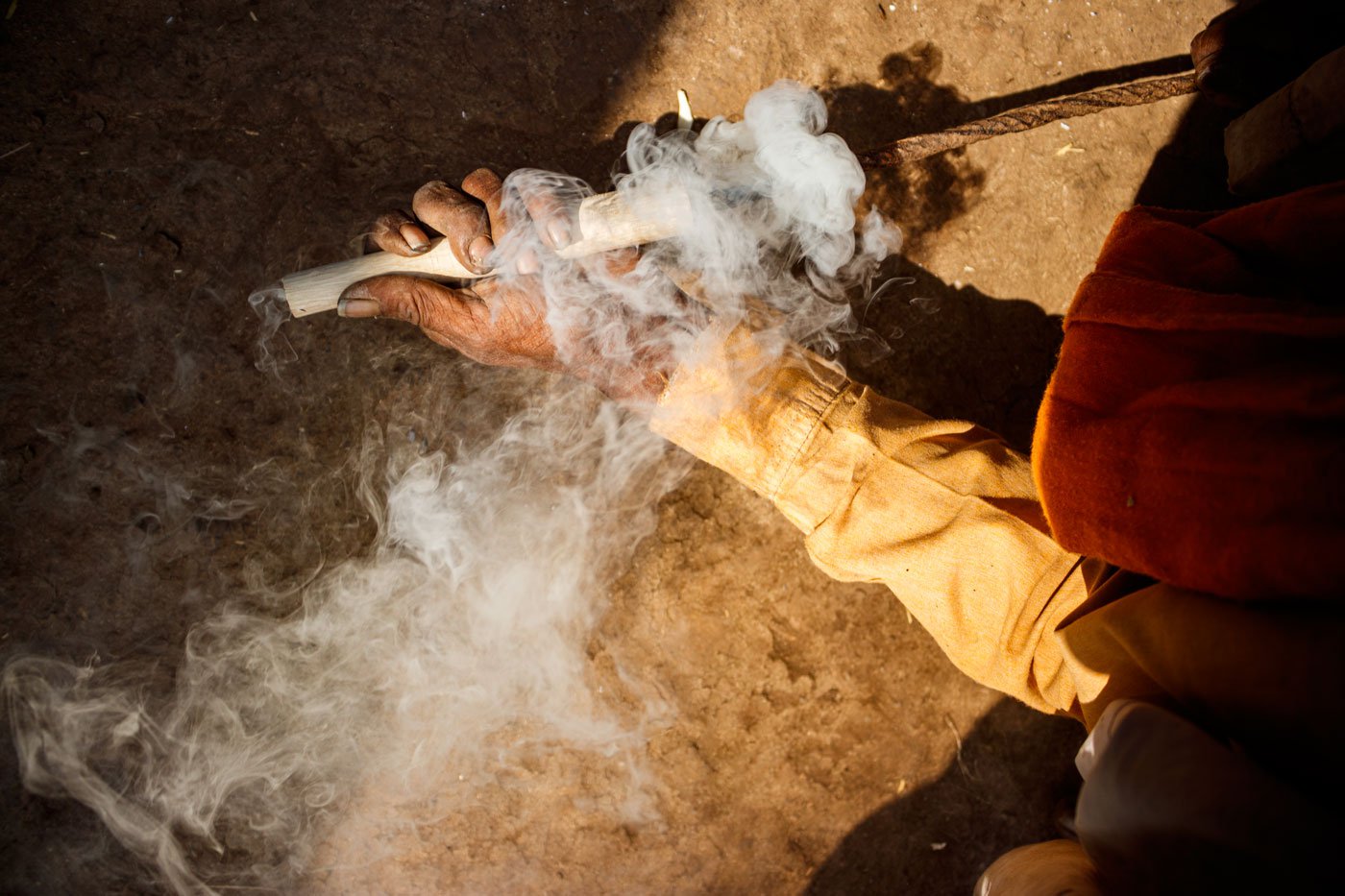
Narayan uses an iron rod to drill holes as he can't afford a drilling machine. It takes him around 50 minutes and has caused third-degree burns in the past
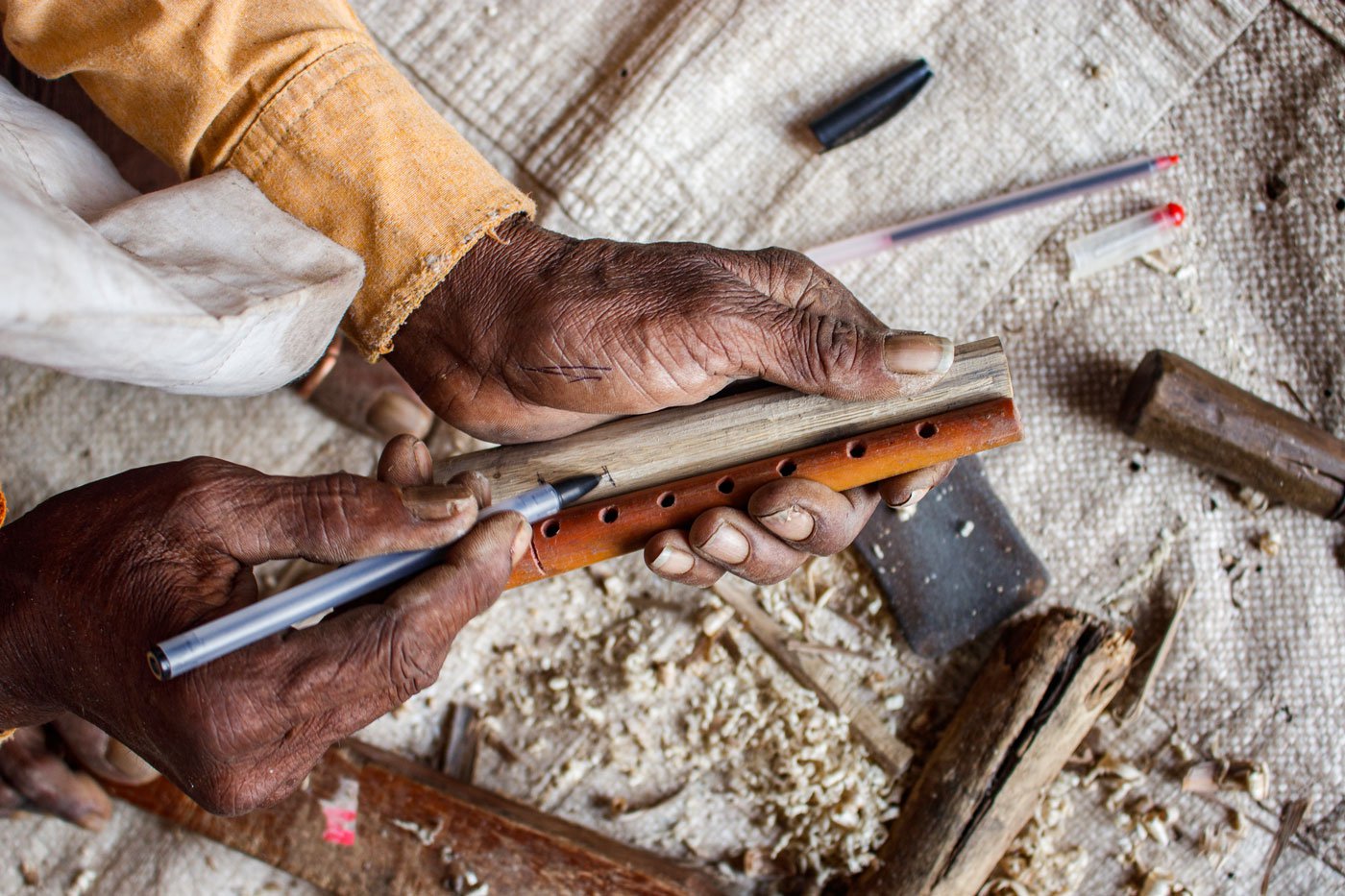
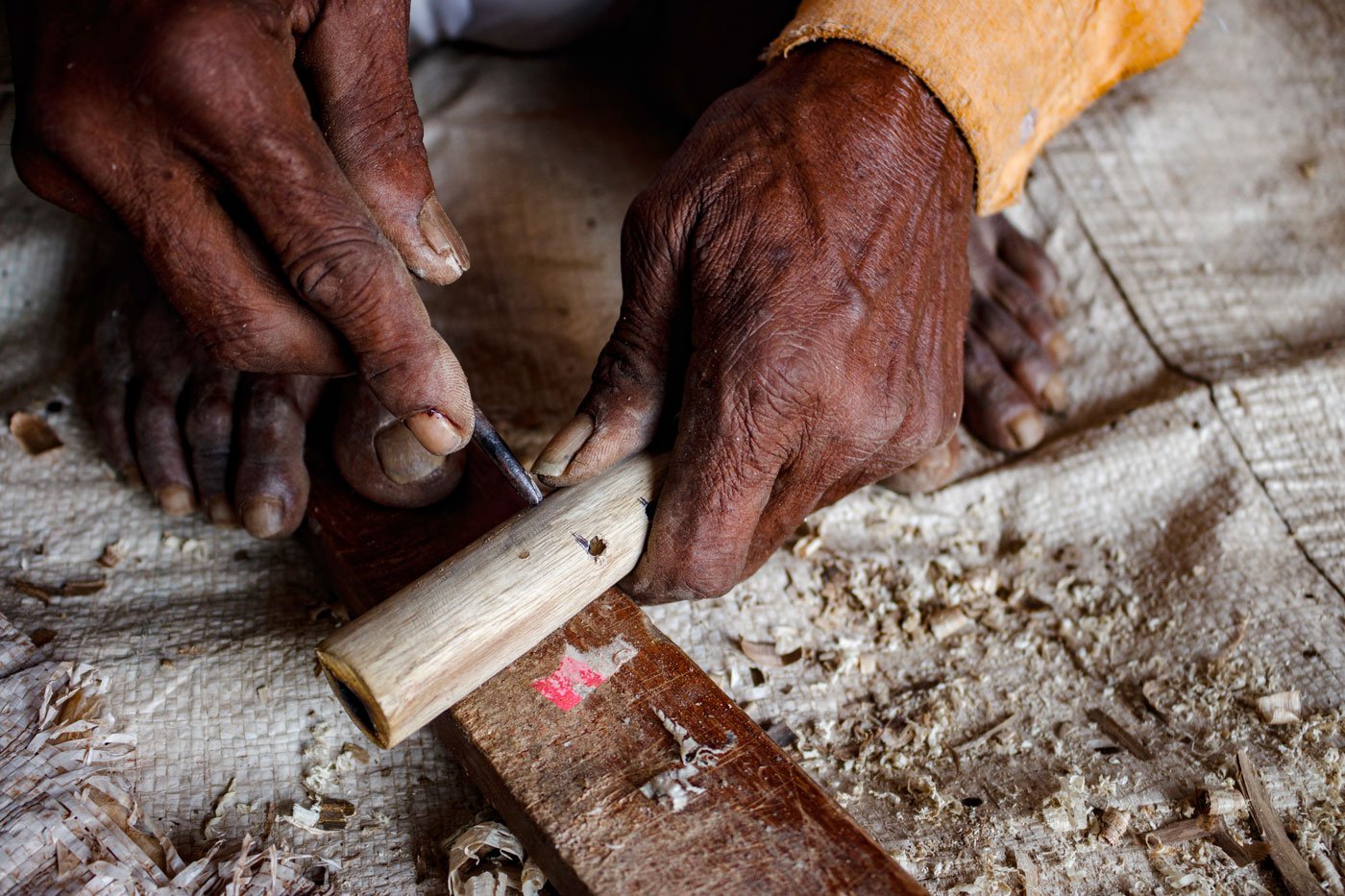
Narayan marks the reference for tone holes on a plastic pirn used in power looms to ensure no mistakes are made while drilling the holes. 'Even a one-millimetre error produces a distorted pitch,' he says
Next, he starts crafting the shehnai’s jibhali (reed), for which he uses a type of perennial cane from the reed species known as tadacha paan in Marathi. The reed must be dried for 20-25 days, and the finest cane stems are then cut into 15-centimetre-long reed segments. A dozen stems, which he buys from Belagavi’s Adi village, cost Rs. 50. “Finding the best paan (reed) remains a challenge,” he says.
He delicately folds the reed into half, twice over, to make a quadruple reed which he soaks in water for 30 minutes. In the finished
shehnai
, it is these two folds that vibrate against each other to create the desired sound. Next, he trims both ends as required and then ties them to a mandrel using white cotton thread.
“
Jibhali la aakar dyaycha kathin aste
[Shaping the reed is difficult],” he says, the vermillion on his wrinkled forehead dissolving in sweat as he focuses on the delicate task. The sharp blades cause multiple cuts on his index finger, but he doesn’t let that distract him. “If I attend to every cut, when will I make
shehnais
?” he laughs. The reed shaped to his satisfaction, Narayan proceeds to attach the plastic bell – in the traditional process, this would be a brass bell – at the wider end of the
shehnai
.
Narayan makes
shehnais
in three different lengths, 22, 18, and nine inches, which he sells for Rs. 2000, Rs. 1500, and Rs. 400, respectively. “The orders for 22 and 18 inches are rare; the last order I got was ten years ago,” he says.
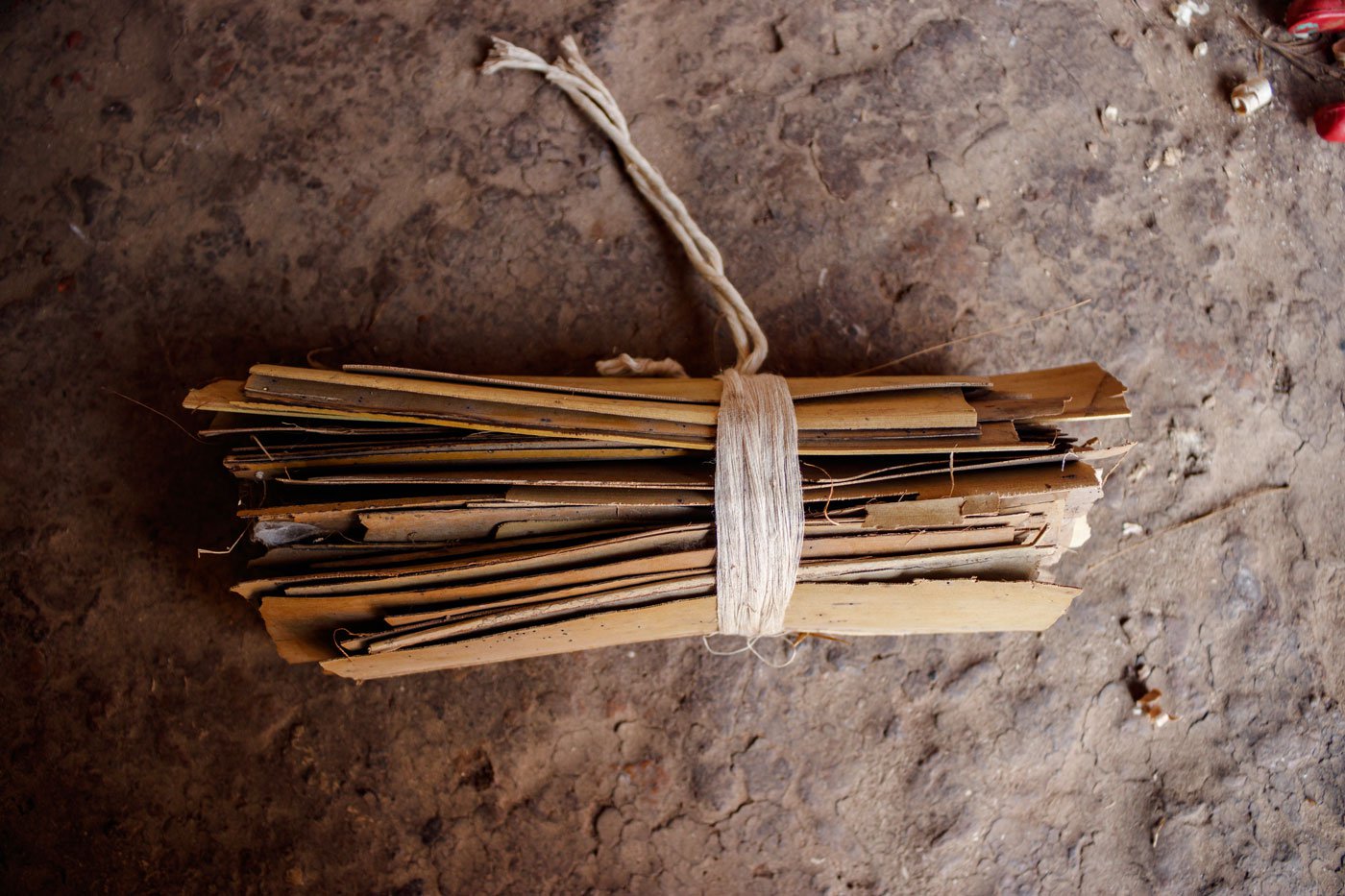
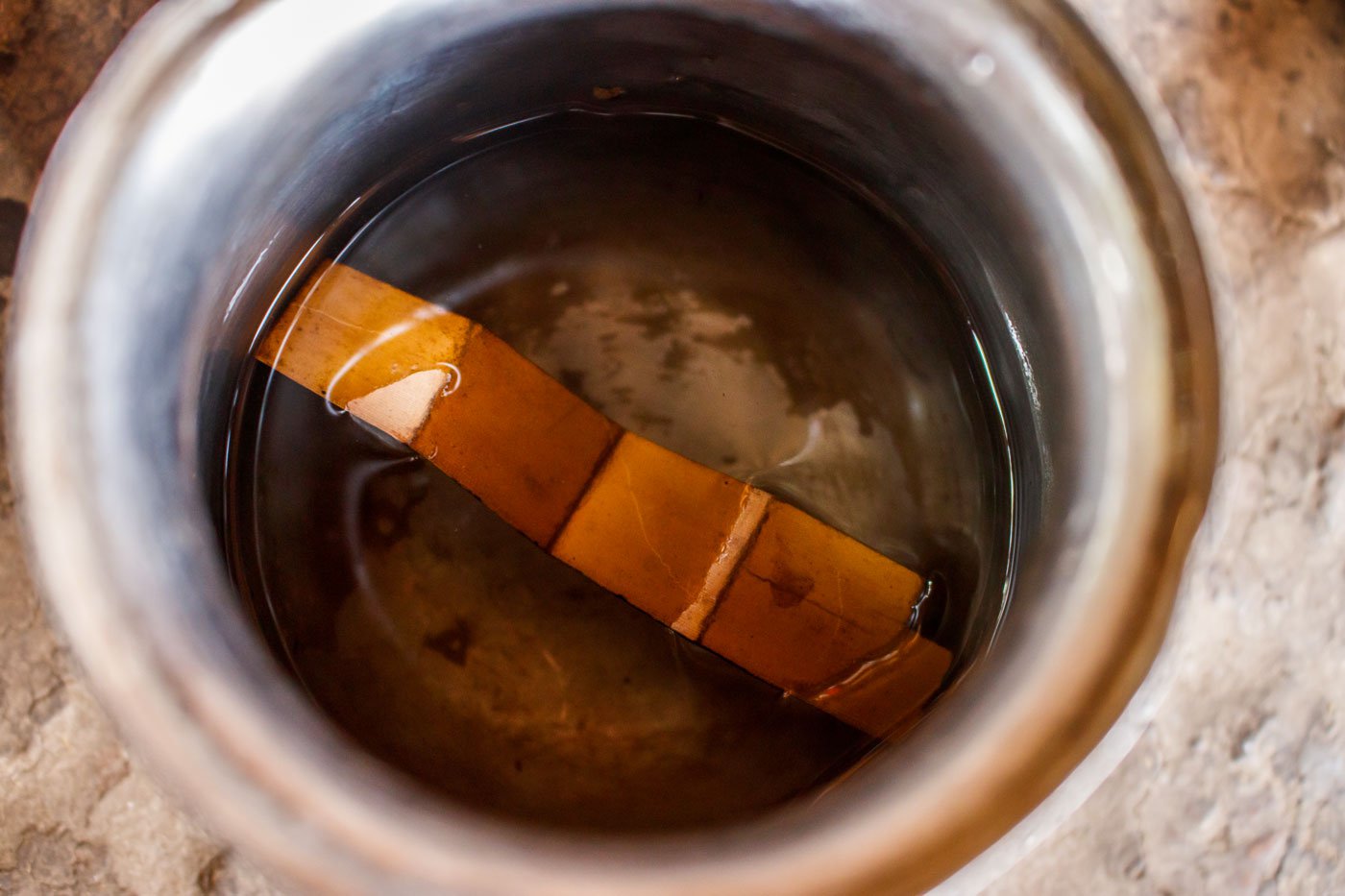
Narayan soaks tadacha paan (perennial cane) so it can easily be shaped into a reed. The reed is one of the most important element of shehnais, giving it its desired sound
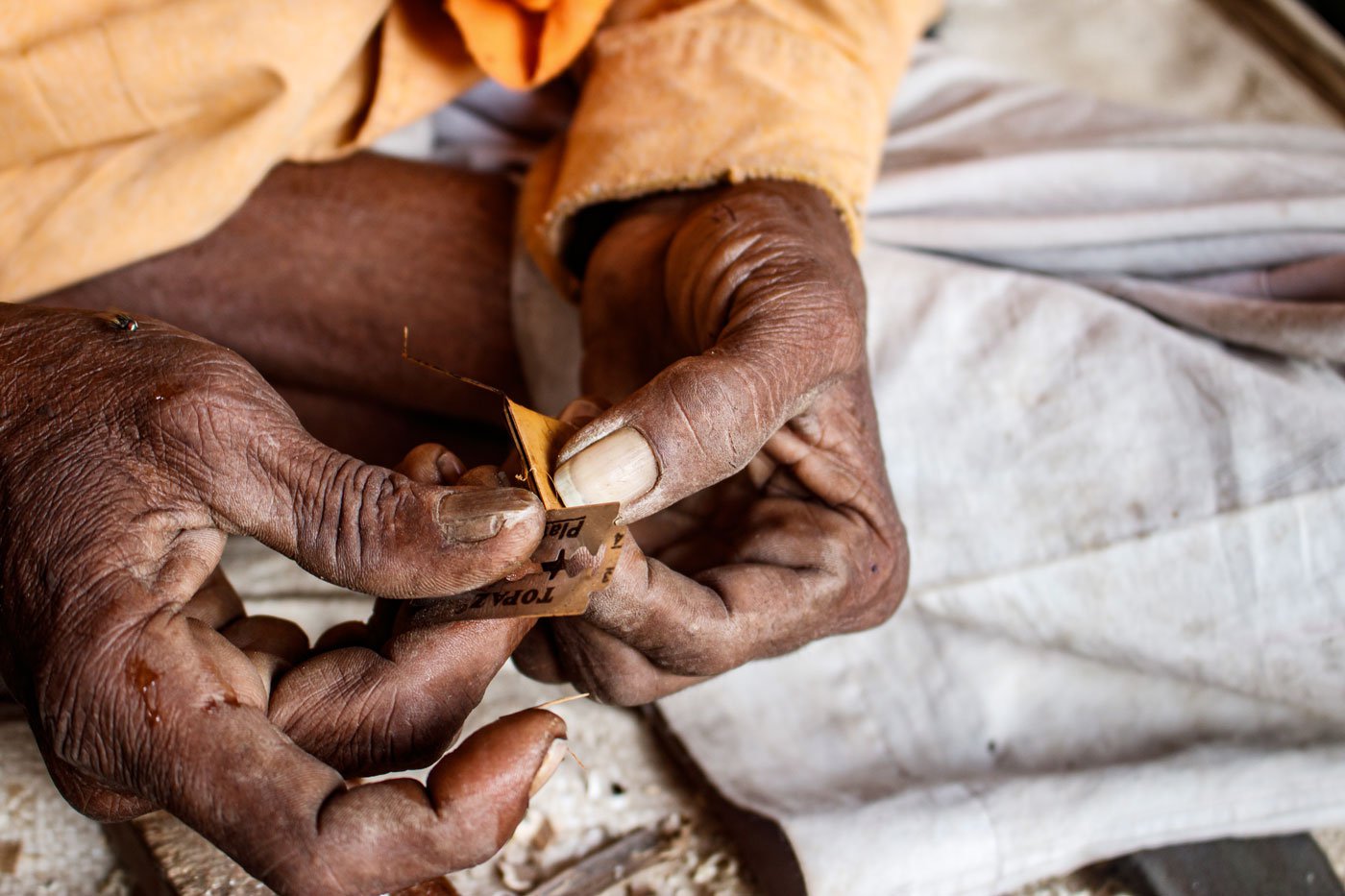
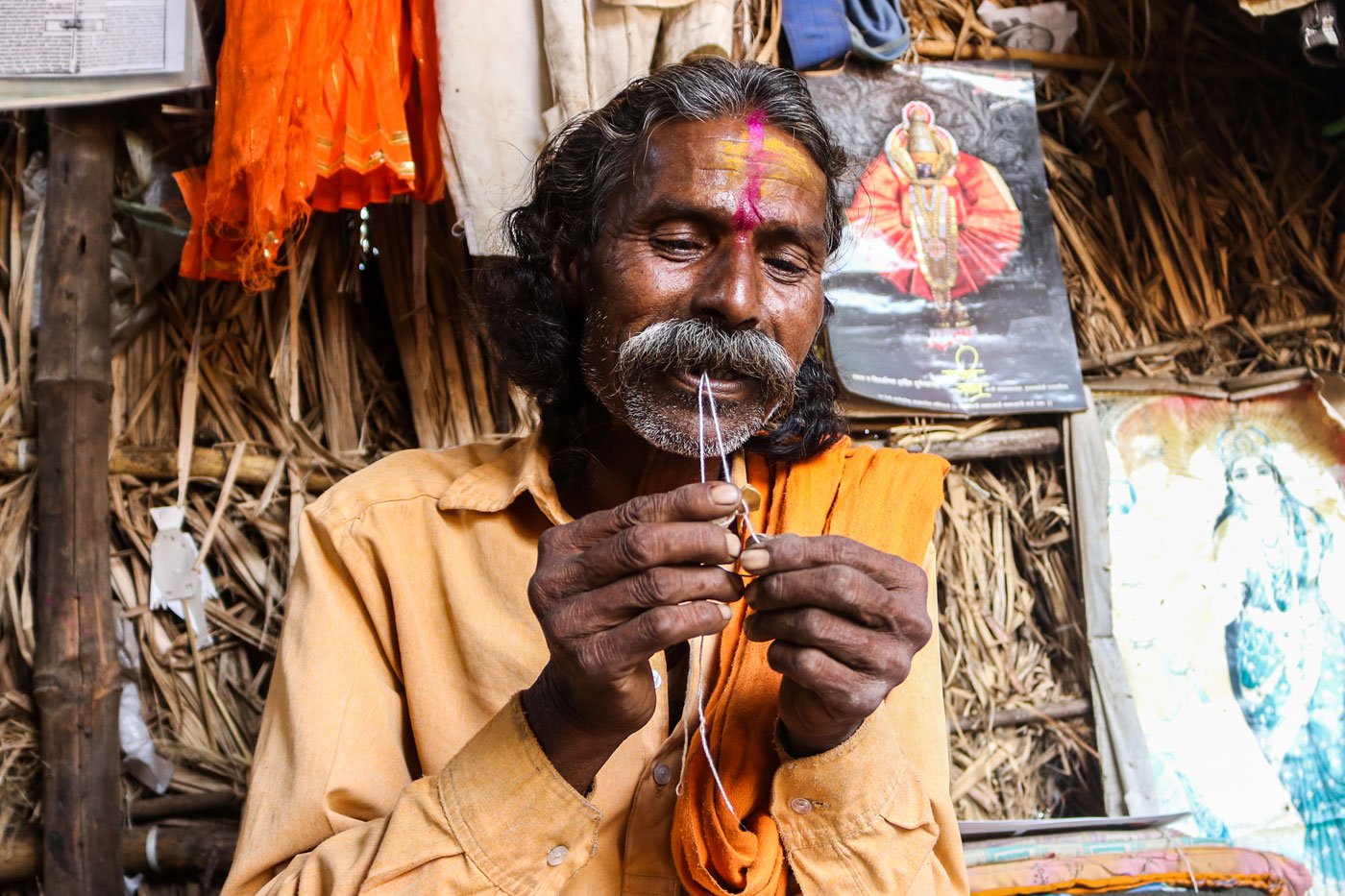
Left: Narayan shapes the folded cane leaf into a reed using a blade. Right: He carefully ties the reed to the mandrel using a cotton thread
His handcrafted wooden flutes have also seen a steady decline in demand. “People don’t buy the wooden ones saying they are costly.” So, three years back, he started using black and blue PVC (Polyvinyl Chloride) pipes to make the flutes. The PVC flutes sell for Rs. 50 apiece, while prices for the wooden version start from Rs. 100, depending on the wood quality and size. However, Narayan is not happy with the compromises he has had to make. “There is no comparison between the wooden flutes and the PVC ones,” he says.
The arduous work that goes into every handmade
shehnai,
the wheezing caused by the smoke of the
chul
, the constant backache from bending over the reed, and the rapidly diminishing return are the reasons why the younger generation is not keen to take up the craft, says Narayan.
If making the
shehnai
is not easy, neither is making music with it. In 2021, he was invited to perform at Kolhapur’s Jotiba temple. “I collapsed within an hour and had to be put on intravenous drips,” he says. After the incident, he quit playing the
shehnai.
“It is not easy. Just look at the face of a
shehnai
player gasping for breath after every performance, and you will understand how difficult
it is.”
But he has no plans to quit making
shehnais
. “
Kalet sukh aahe
[This art gives me happiness],” he says.
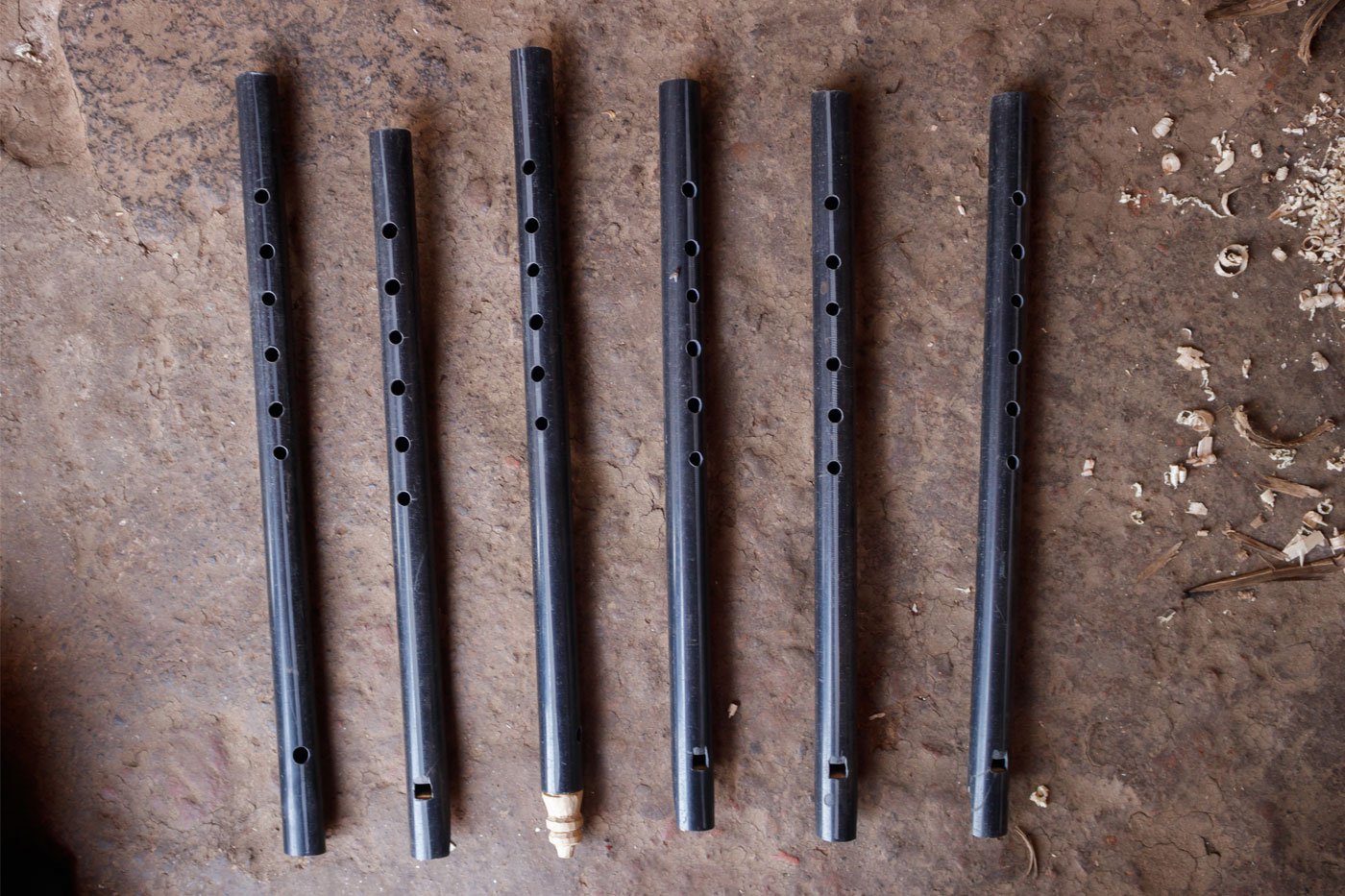
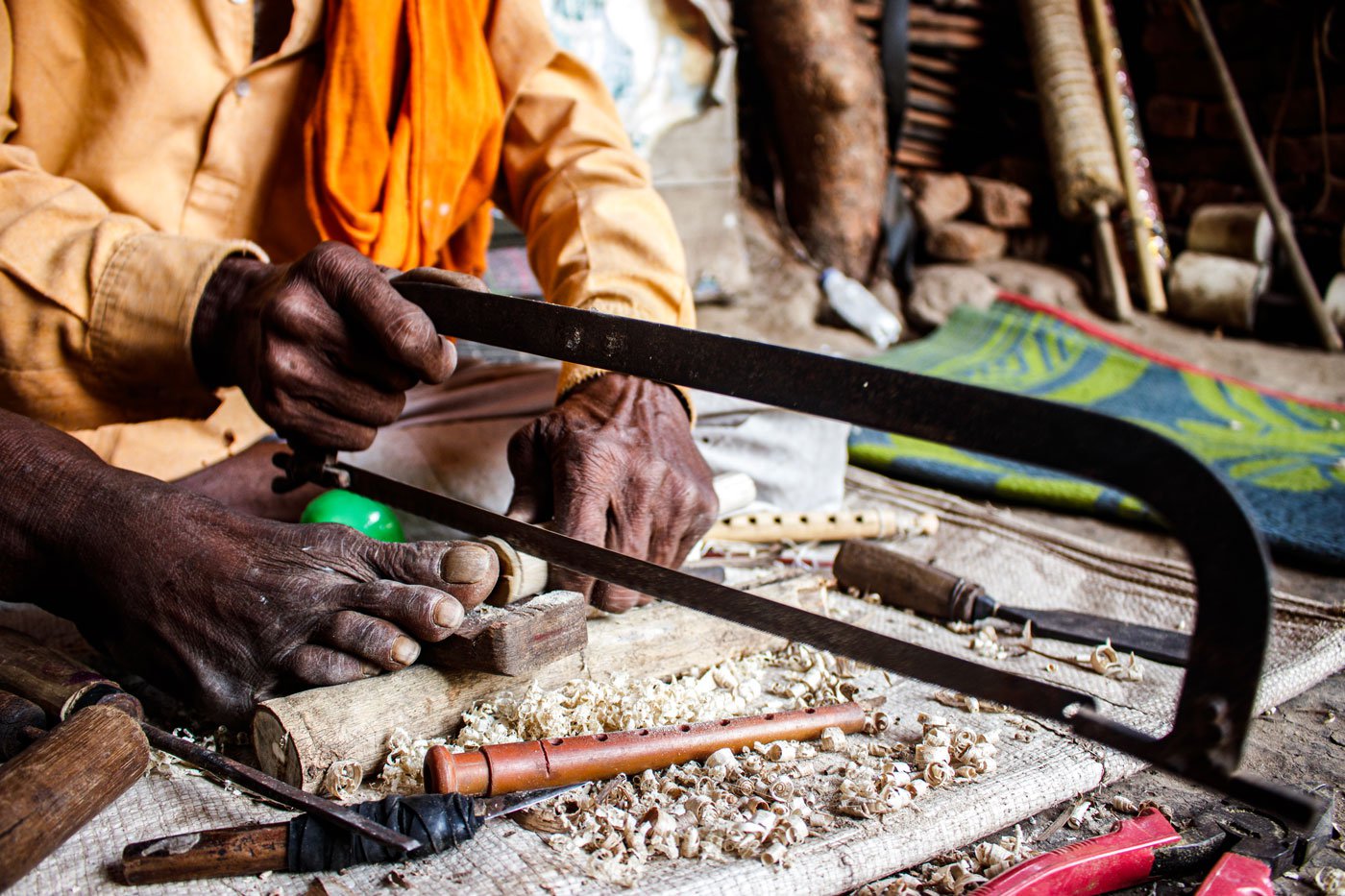
Left: Narayan started making these black and blue PVC ( Polyvinyl Chloride) three years ago as demand for wooden flutes reduced due to high prices. Right: He is cutting off the extra wooden part, which he kept for margin to help correct any errors while crafting the shehnai
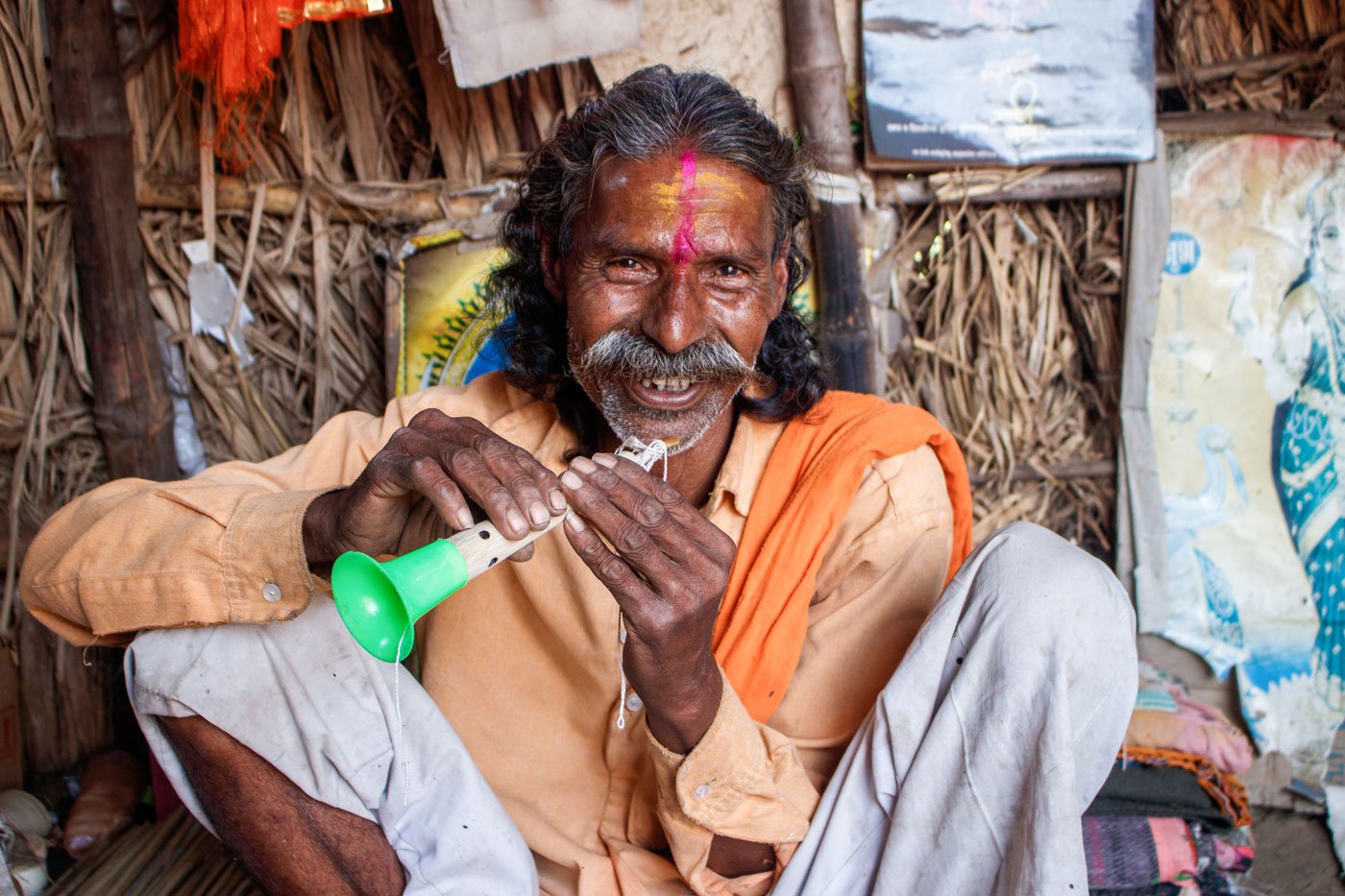
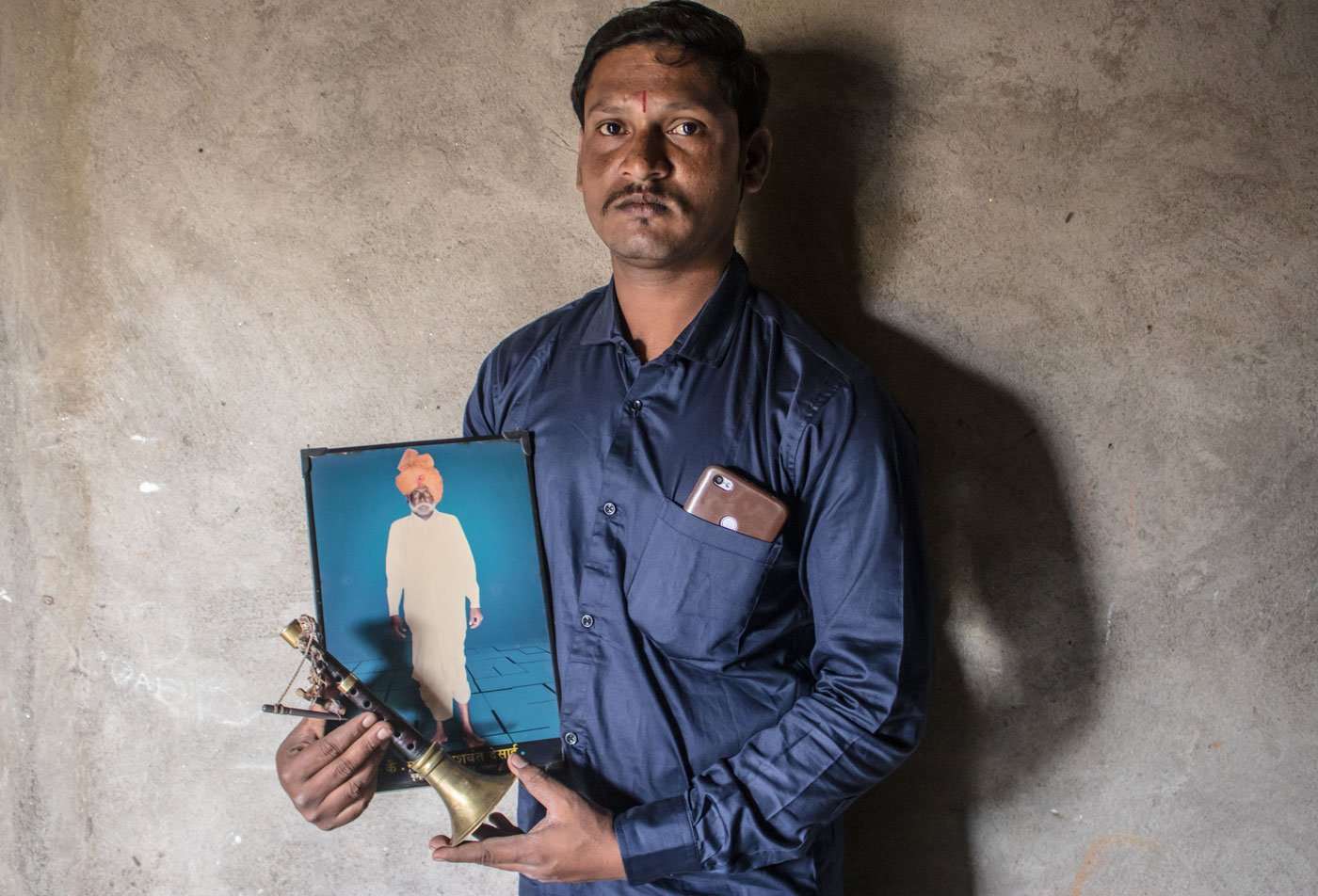
Left: Narayan has made more than 5000 shehnais , spending 30,000 hours on the craft in the last five decades. Right: Arjun Javir holding a photo of Maruti Desai, his late grandfather, considered one of the finest shehnai players in Manakapur
*****
Narayan has known for a long time now that he cannot rely solely on shehnais and flutes to make a living. That is why, three decades ago, he started making colourful pinwheels to supplement his income. “In rural fairs, there’s still a demand for pinwheels because not everyone can afford a smartphone for playing games.” At Rs. 10 each, these paper artefacts bring joy to people’s lives – and some much-needed income into Narayan’s household.
Besides pinwheels, which are quick and easy to assemble, he also crafts miniature spring toys and pull-up toys. His repertoire includes 20-odd types of colourful origami birds, each selling for Rs. 10-20. “I never went to art school. But, once I take paper in hand, I don't stop until I make something out of it,” he says.
The COVID-19 pandemic and the consequent ban on village fairs and public gatherings brought this business to the brink. “I couldn’t sell a single pinwheel for two years,” he says. Work resumed only in March 2022 with Manakapur’s
Mahashivratri
yatra
. However, with poor health following a heart attack making it difficult for him to travel, he now depends on agents to sell his pinwheels. “For every pinwheel sold, I have to give three rupees as commission to the agents,” he says. “I am not happy with this, but it brings in some income,” says Narayan, who earns barely Rs. 5000 a month.
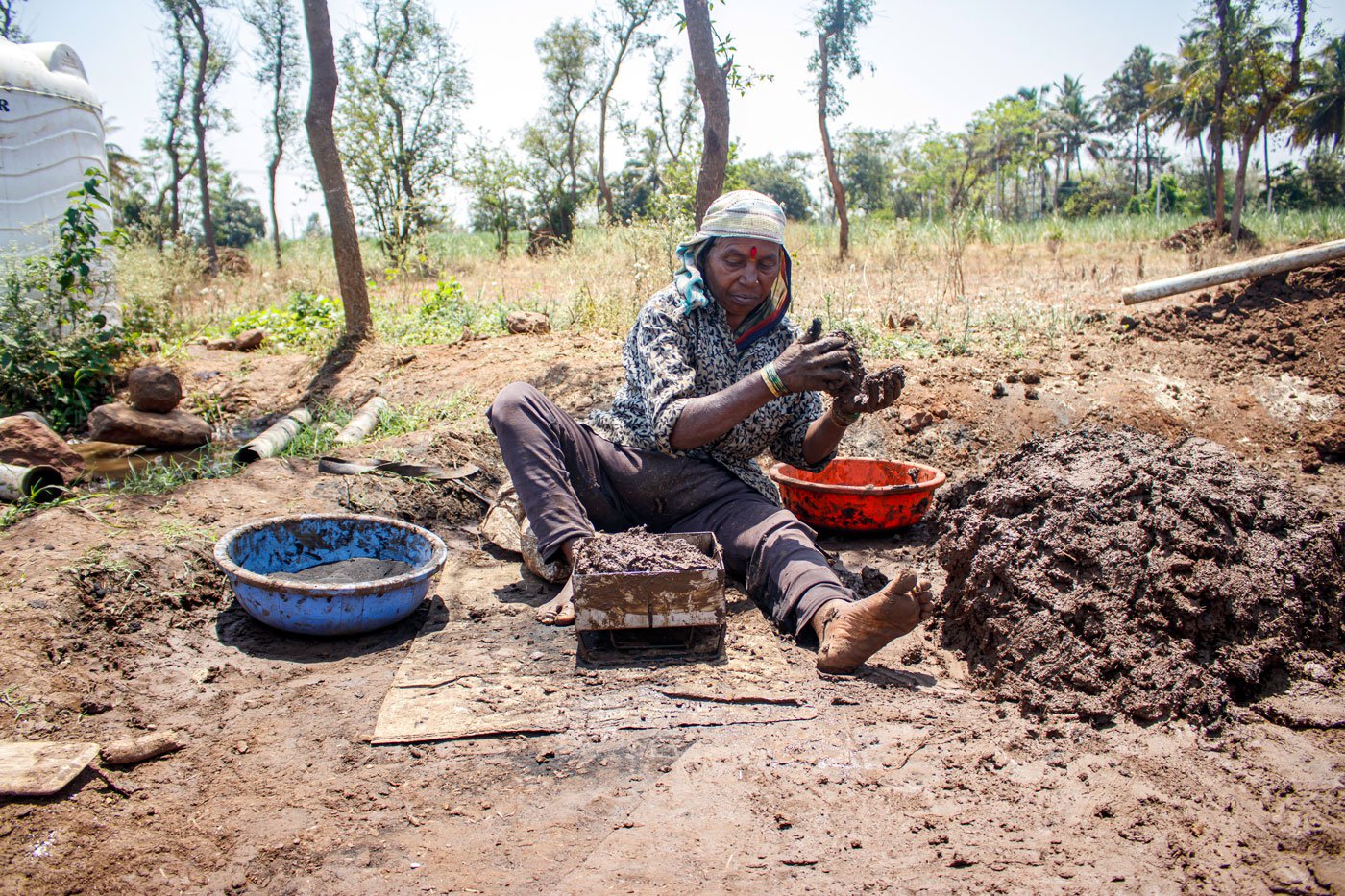
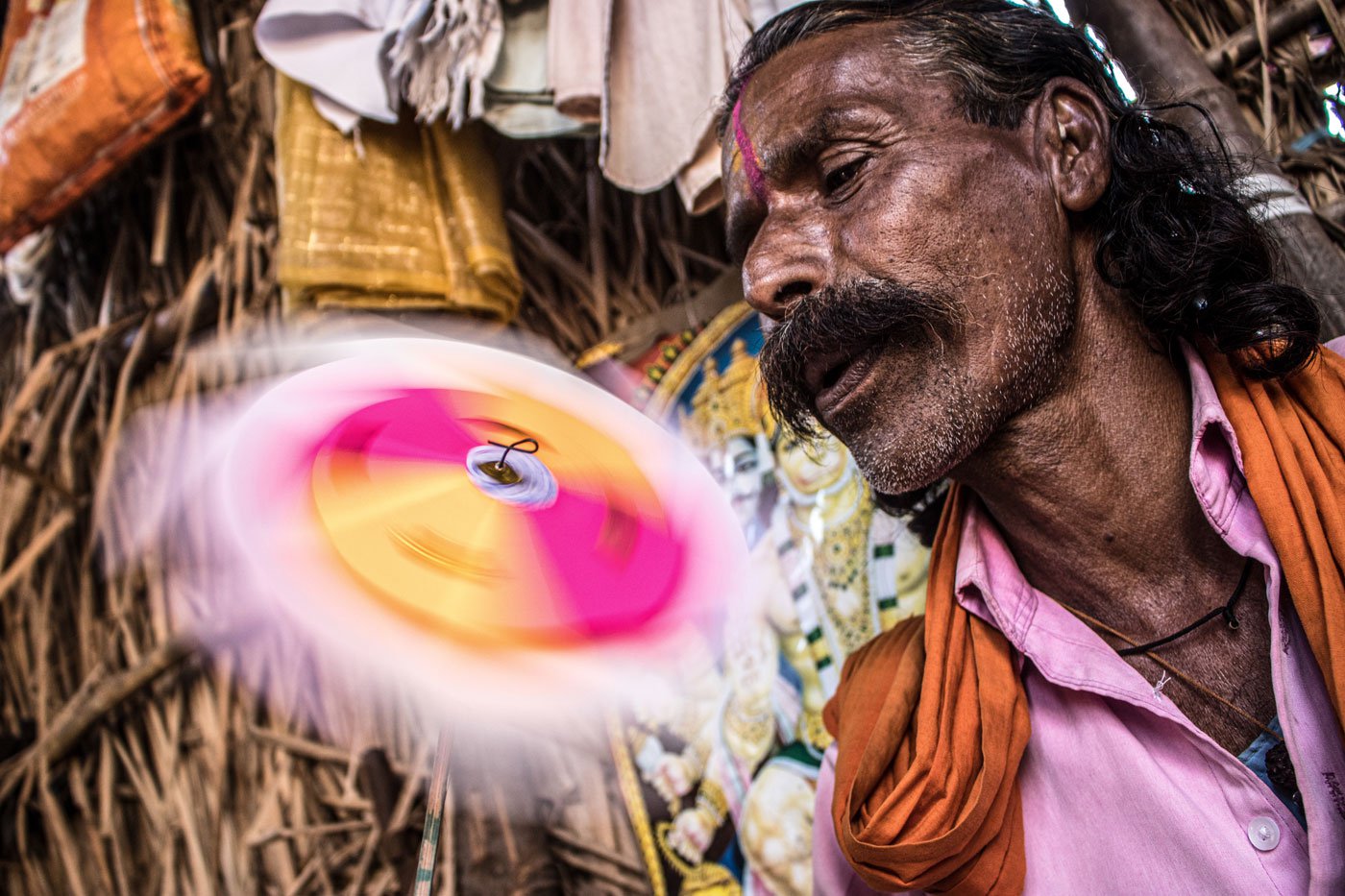
Left: Sushila, Narayan's wife, works at a brick kiln and also helps Narayan in making pinwheels, shehnais and flutes. Right: Narayan started making colourful pinwheels three decades ago to supplement his income
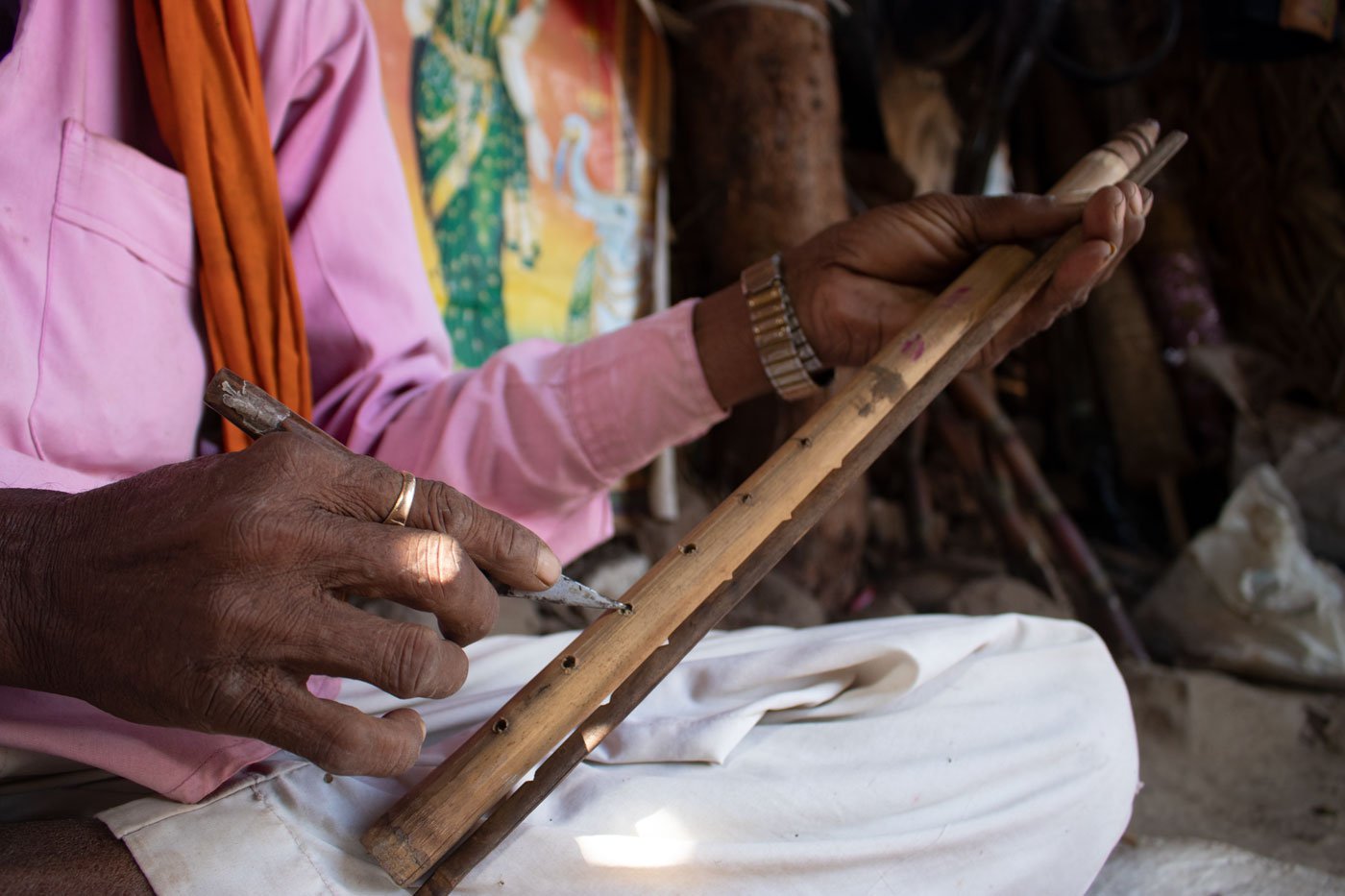
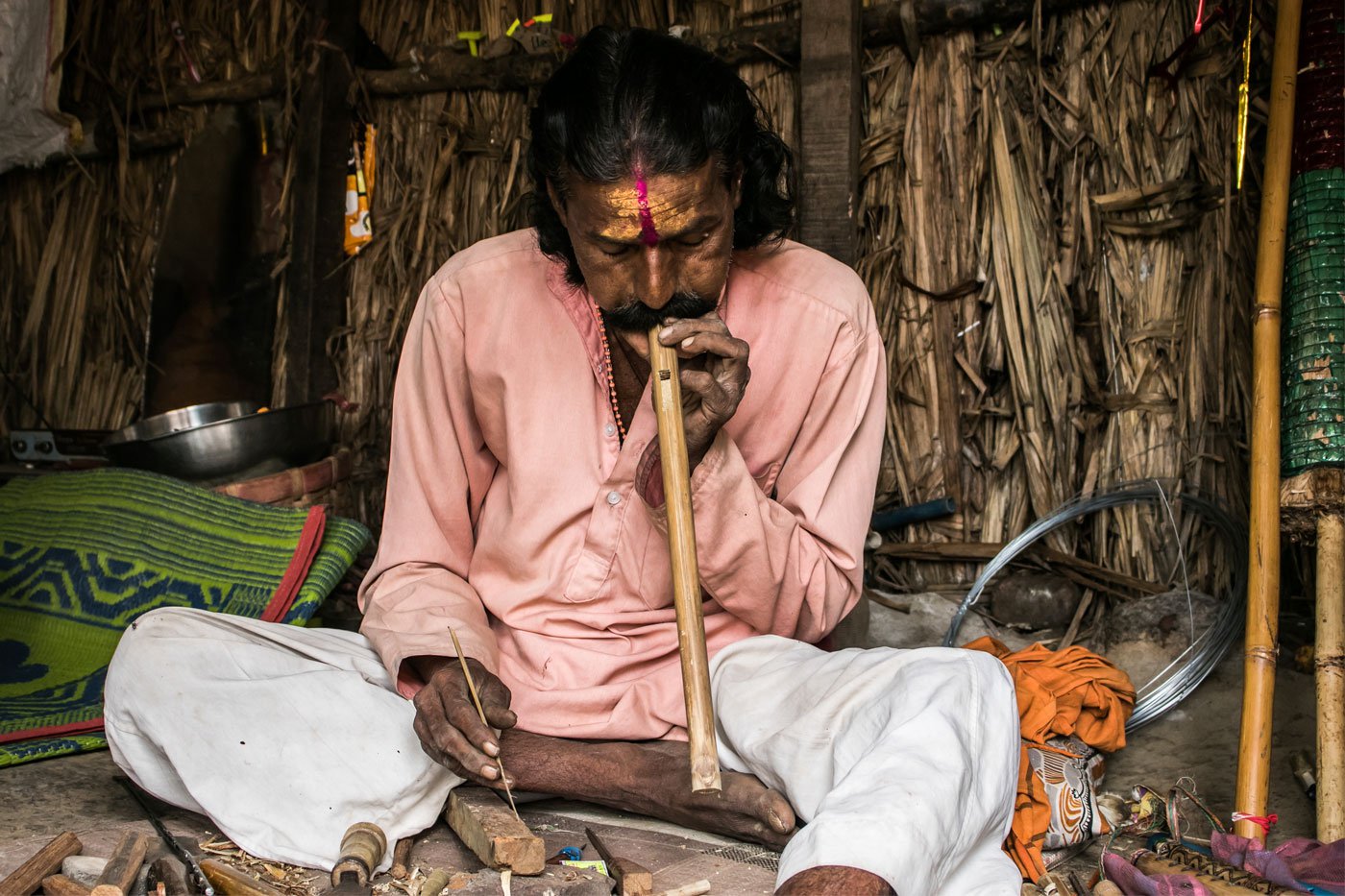
Narayan marks the tone holes (left) of a flute using the wooden reference scale he made and then checks if it is producing the right tones (right)
His wife, Sushila, who is in her mid-40s and works at a brick kiln, lends a hand at making pinwheels. Sometimes, she also helps him make s hehnais and flutes, stepping into a space that has been guarded by men for ages. “Had Sushila not helped me, this occupation would have died several years ago,” says Narayan. “She helps run this family.”
“I don’t have many skills. I just sit in one place and make things,” he says, modestly. “
Aamhi gelo mhanje geli kala
[This art will die with me],” he says, picking up a framed photo of his father and grandfather playing the
shehnai.
This story is part of a series on rural artisans by Sanket Jain, and is supported by the Mrinalini Mukherjee Foundation.
